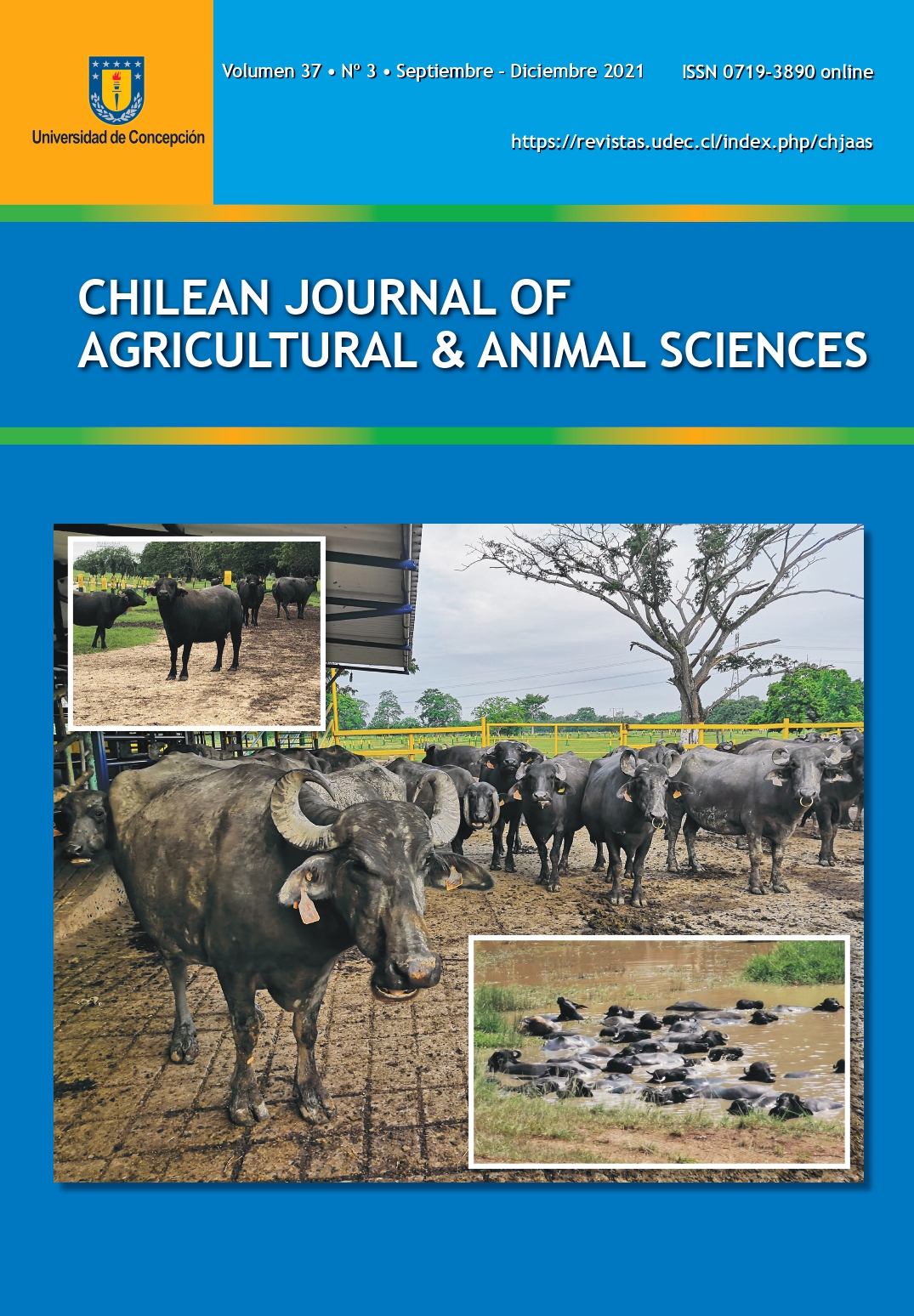APPLICATION OF MULTIVARIATE ANALYSIS TO DIFFERENTIATE HARARGHE HIGHLAND GOAT POPULATIONS REARED IN THE WEST HARARGHE ZONE, ETHIOPIA
Takele et al. Multivariate analysis to differentiate the Hararghe highland goat populations
DOI:
https://doi.org/10.29393/CHJAAS37-23AMAM30023Palabras clave:
Agroecología, análisis discriminante, análisis de conglomerados, rasgos morfométricosResumen
Multivariate analysis of morphological variables has been successfully used to estimate genetic
variation within and between local breeds. The objective of this study was to differentiate Hararghe
highland goat populations based on their morphometric traits by applying multivariate analysis.
Sixteen morphometric traits were collected from 450 goats reared in the three agroecological zones
(highland, midland and lowland) of West Hararghe. Multivariate canonical discriminant analysis
in combination with cluster and discriminant analysis was applied to identify the combination of
variables that differentiate goats of the three agroecological zones. The results indicated that all
the morphometric traits were significantly affected by age. The cluster analysis indicated that two
main groups of midland goats were included in one group, while group two included highland and
lowland goats under one sub-cluster. The canonical discriminant analysis identified two canonical
variables (CAN) of which CAN1 and CAN2 accounted for 68.2 and 31.8% of the total variation,
respectively. The quadratic discriminant analysis correctly assigned the respective 71.3, 77.3, and
81.3% of lowland, midland, and highland goat populations into their source populations, with an
overall accuracy rate of 76.7%. The Mahalanobis distance verified that lowland and highland goats are
the closest, while midland and highland goats were the furthest. However, the canonical discriminant
analysis indicated a visible overlapping between goat populations of the three agroecological zones,
indicating the existence of homogeneity among them. In conclusion, multivariate analysis identified
11 morphometric traits as the most imperative traits to differentiate Hararghe highland goat
populations effectively. Genetic potentials of Hararghe highland goat populations can be improved
through community-based breeding programs for their sustainable utilization and conservation.
Descargas
Publicado
Cómo citar
Número
Sección
Derechos de autor 2021 Universidad de Concepción

Esta obra está bajo una licencia internacional Creative Commons Atribución 4.0.







